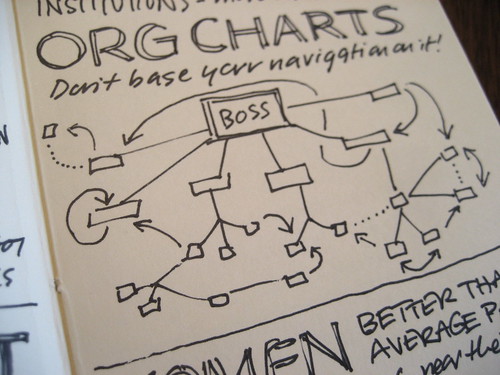I’ve only been exploring Twitter and the blogosphere as they related to Millennials and the nonprofit sector for only a few months now – Twitter in March and blogging in June. I’ve learned a LOT in that short time and can’t believe I didn’t start sooner. And I hope I’ve contributed as well. It’s a perfect space to network for my introverted self.
So I was thrilled to be ask to be a part of an alliance of bloggers who flutter around the topics related to Millennials and the nonprofit sector. A big thanks to Allison Jones for getting the ball rolling.
Of Mutual Benefit
I first heard about the idea of a blog alliance through Problogger’s vague exposé on a secret blog alliance. The idea intrigued me, and apparently others were too. The alliance in Darren’s article was a
A small group of bloggers who’ve committed to work together in secret for the mutual benefit of all members of the alliance.
The mutually beneficial activities listed in Darren’s posts include things like commenting on and linking each others blogs, social bookmarking and tweeting, guest posts, and networking. Ideally we benefit by increasing the conversation around nonprofits and the Millennial generation by increasing readership and commenting of our blogs, as well as increasing the pressure to write well!
Not-So-Secret
Well this alliance is not working in secret. Perhaps because we don’t blog for profit (on our personal blogs anyway). Maybe because of the open, sharing nature of those that work in the nonprofit sector. We haven’t really sorted out the fine details, but we’re all excited. I’m also thrilled to bring a Canadian perspective to the alliance.
Introducing the Alliance
| A. Lauren Abele | A. Lauren Abele (blog) |
| In New York, there is so much vibrancy, energy, passion, and access to the best the country has to offer. It’s the perfect landscape to work with entrepreneurs, meet people who are changing the world, and develop my passions for philanthropy, social entrepreneurship, and nonprofit management. | |
| – | |
| Elizabeth Clawson | Nonprofit Periscope |
| Keeping an eye on news of the sector. Read one of Elizabeth’s favourite posts: No money? No problem—three free media relations tools for nonprofits (and others) | |
| – | |
| Colleen Dilenschneider | Know Your Bone |
| My thing? Creative community engagement in nonprofit organizations. | |
| – | |
| James Elbaor | Notes From the East Coast |
| His first passion is the not-for-profit sector. He cares deeply about social justice and the importance of community activism. | |
| – | |
| Kevin Gilnack | (Nonprofits + Politics)2.0 |
| Some areas of interest to me include nonprofit management, leadership development, workforce issues, public policy, civic engagement, business partnerships, innovation… for starters. | |
| – | |
| Trina Isakson (that’s me!) | the good life | by Trina Isakson |
| Good articles on nonprofit capacity, community development, engaged citizenship and education. Life stories about travel, photography, music, and musings. Read one of my favourite posts: Social movements, institutions and the Millennial generation: synthesis or breakdown? | |
| – | |
| Allison Jones | Entry Level Living |
| The personal and professional insights of a struggling college grad.Read one of Allison’s favourite posts: Are you joining a sector or joining a cause? | |
| – | |
| Elisa M. Ortiz | Onward and Upward |
| Keeping an eye on the nonprofit sector, from the bottom up. Read one of Elisa’s favourite posts: The new leadership crisis. | |
| – | |
| Ben Sheldon | island94.org: an internet backwater |
| Ben Sheldon is an author, thinker, facilitator, automator, mapper, artist, human and more. | |
| – | |
| Rosetta Thurman | Rosetta Thurman (website) |
| Promoting next generation leadership for social change. Read one of Rosetta’s favourite posts: Why I Work in the Nonprofit Sector. | |
| – | |
| Tracey Webb | Black Gives Back |
| A blog dedicated to Philanthropy in the Black Community. | |
| – | |
| Tera Wozniak Qualls | Social Citizen |
| I am a nonprofit professional, social citizen, & community member. I blog to learn, express my interest & expertise in organizational development, expand my career, network, & discuss nonprofit leadership and community engagement. | |



